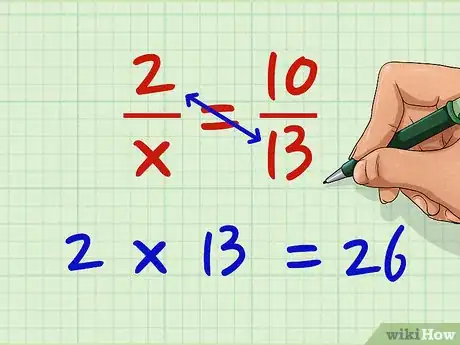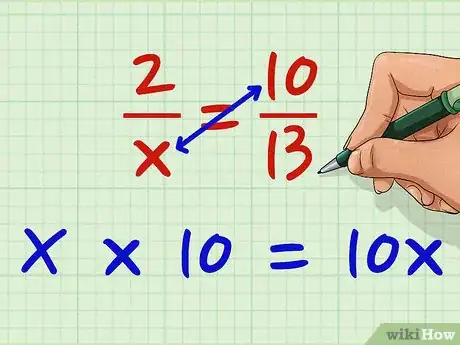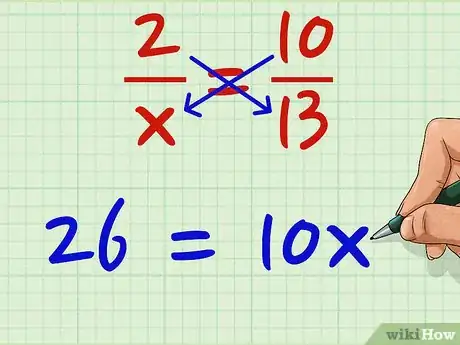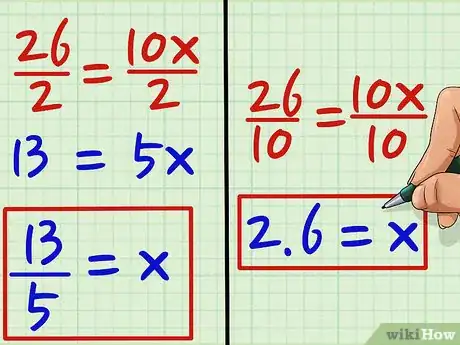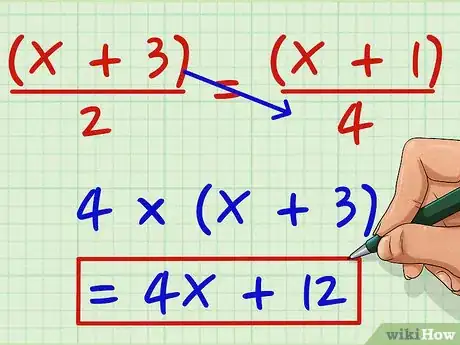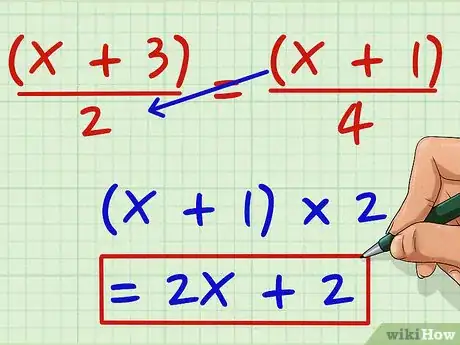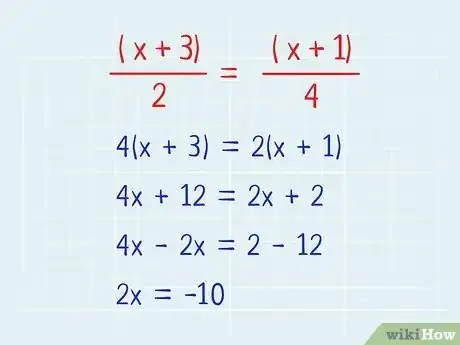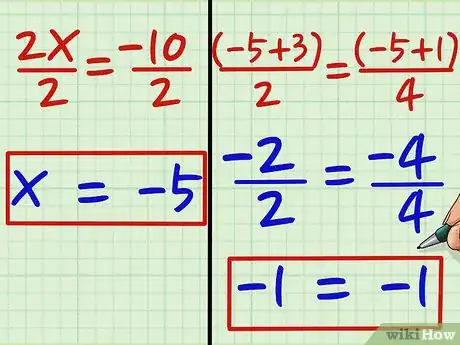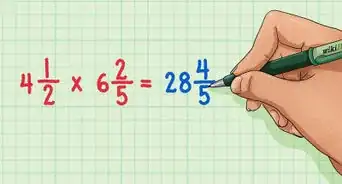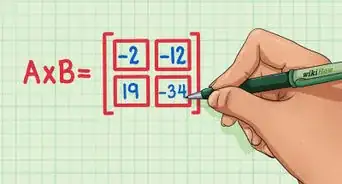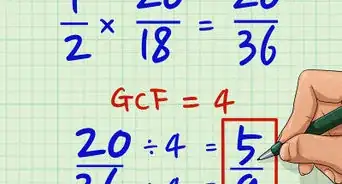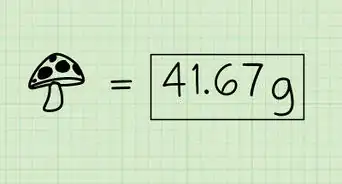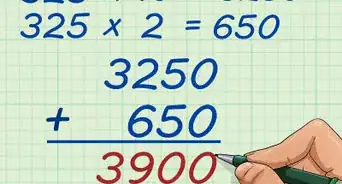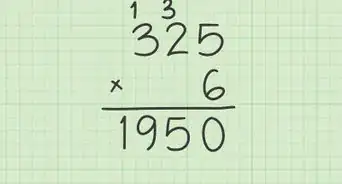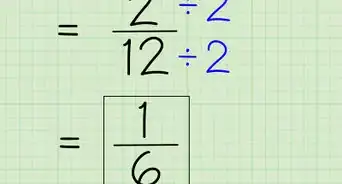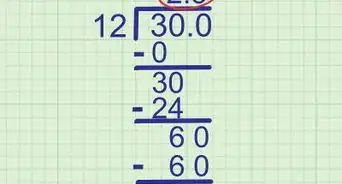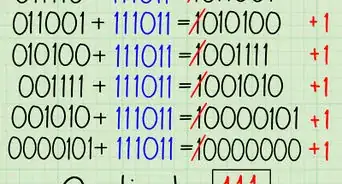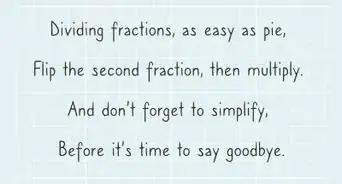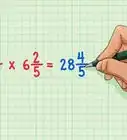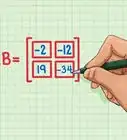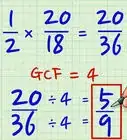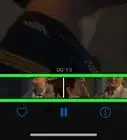wikiHow is a “wiki,” similar to Wikipedia, which means that many of our articles are co-written by multiple authors. To create this article, 33 people, some anonymous, worked to edit and improve it over time.
This article has been viewed 703,535 times.
Learn more...
Cross multiplying is a way to solve an equation that involves a variable as part of two fractions set equal to each other. The variable is a placeholder for an unknown number or quantity, and cross-multiplying reduces the proportion to one simple equation, allowing you to solve for the variable in question. Cross multiplying is especially useful when you're trying to solve a ratio. Here's how to do it:
Steps
Cross Multiplying with a Single Variable
-
1Multiply the numerator of the left-hand fraction by the denominator of the right-hand fraction. Let's say you're working with the equation 2/x = 10/13. Now, multiply 2 * 13. 2 * 13 = 26.[1]
-
2Multiply the numerator of the right-hand fraction by the denominator of the left-hand fraction. Now multiply x by 10. x * 10 = 10x. You can cross multiply in this direction first; it really doesn't matter as long as you multiply both numerators by the denominators diagonal from them.[2]Advertisement
-
3Set the two products equal to each other. Just set 26 equal to 10x. 26 = 10x. It doesn't matter which number you list first; since they're equal, you can swap them from one side of the equation to the other with impunity, as long as you treat each term as a whole.[3]
- So, if you're trying to solve 2/x = 10/13 for x, you'd have 2 * 13 = x * 10, or 26 = 10x.
-
4Solve for the variable. Now that you're working with 26 = 10x, you can start by finding a common denominator and dividing both 26 and 10 by a number that divides evenly into both numbers. Since they are both even, you can divide them by 2; 26/2 = 13 and 10/2 = 5. You're left with 13 = 5x. Now, to isolate x, divide both sides of the equation by 5. So, 13/5 = 5x/5, or 13/5 = x. If you'd like the answer in decimal form, you can start by dividing both sides of the equation by 10 to get 26/10 = 10x/10, or 2.6 = x.[4]
Cross Multiplying with Two of the Same Variable
-
1Multiply the numerator of the left-hand fraction by the denominator of the right-hand fraction.[5] Let's say you're working with the following equation: (x + 3)/2 = (x + 1)/4. Multiply (x + 3) by 4 to get 4(x +3). Distribute the 4 to get 4x + 12.
-
2Multiply the numerator of the right-hand fraction by the denominator of the left-hand fraction.[6] Repeat the process on the other side. (x +1) x 2 = 2(x +1). Distribute the 2 and you get 2x + 2.
-
3Set the two products equal to each other and combine the like terms. Now, you'll have 4x + 12 = 2x + 2. Combine the x terms and the constant terms on opposite sides of the equation.
- So, combine 4x and 2x by subtracting 2x from both sides. Subtracting 2x from 2x on the right side will leave you with 0. On the left side, 4x - 2x = 2x, so you have 2x remaining.
- Now, combine 12 and 2 by subtracting 12 from both sides of the equation. Subtract 12 from 12 on the left and you'll have 0, and subtract 12 from 2 on the right side to get 2-12 = -10.
- You're left with 2x = -10.
-
4Solve. All you have to do is divide both sides of the equation by 2. 2x/2 = -10/2 = x = -5. After cross multiplying, you have found that x = -5. You can go back and check your work by plugging in -5 for x to make sure that both sides of the equation are equal. They are. If you plug -5 back into the original equation, you'll get -1 = -1.
Community Q&A
-
QuestionHow would I solve 30% of 65
 Community AnswerMultiply 65 by 0.3. (You could think of it as multiplying 65 by 10% by just moving the decimal point to the left one digit to get 6.5 and then multiplying by 3 to get 30% of 65.)
Community AnswerMultiply 65 by 0.3. (You could think of it as multiplying 65 by 10% by just moving the decimal point to the left one digit to get 6.5 and then multiplying by 3 to get 30% of 65.) -
QuestionOne day 176 people visited a small art museum. The ratio of members to nonmembers that day was 5 to 11. How many people who visited the museum that day were nonmembers?
 DonaganTop AnswererAdd together the two numbers in the ratio: 5 + 11 = 16. Divide that sum into the total number of visitors: 176 ÷ 16 = 11. Multiply that quotient by the ratio number representing the non-members (11): (11)(11) = 121 non-members. (If you wanted to find the number of members, you'd multiply 11 by the 5 in the ratio: (11)(5) = 55 members.)
DonaganTop AnswererAdd together the two numbers in the ratio: 5 + 11 = 16. Divide that sum into the total number of visitors: 176 ÷ 16 = 11. Multiply that quotient by the ratio number representing the non-members (11): (11)(11) = 121 non-members. (If you wanted to find the number of members, you'd multiply 11 by the 5 in the ratio: (11)(5) = 55 members.) -
QuestionWhat fractions do not work?
 DonaganTop AnswererThe above technique works with all fractions. Some fractions are just more complicated than others, as in Method 2 above.
DonaganTop AnswererThe above technique works with all fractions. Some fractions are just more complicated than others, as in Method 2 above.
References
- ↑ https://www.mathsisfun.com/algebra/cross-multiply.html
- ↑ http://www.aaamath.com/rat-prop-crossx.htm
- ↑ http://mathforum.org/library/drmath/view/57461.html
- ↑ http://virtualnerd.com/geometry/similarity/ratios-proportions/proportion-cross-multiply-example
- ↑ https://www.decodedscience.org/cross-multiply-to-solve-equations-with-fractions/25496
- ↑ https://www.decodedscience.org/cross-multiply-to-solve-equations-with-fractions/25496
- http://www.purplemath.com/modules/ratio2.htm
About This Article
To cross multiply, start by multiplying the numerator of the left-hand fraction by the denominator of the right-hand fraction. Then, multiply the numerator of the right-hand fraction by the denominator of the left-hand fraction. Next, set the 2 products equal to each other. Finally, solve for the variable. To learn how to cross multiply with 2 of the same variable, scroll down!
